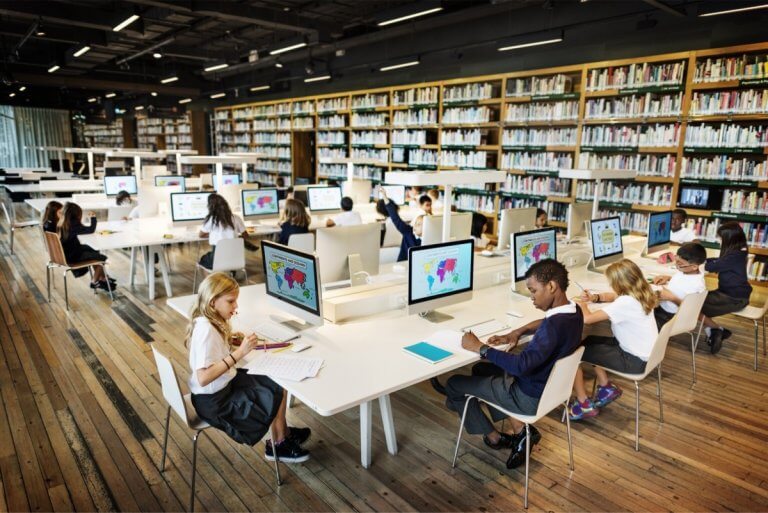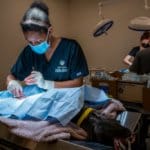
Scattered all over online drives, data sharing devices and modern virtual workspaces, student data is rife on all corners of the globe.
This means educational content like video, images, learning resources and even student work is often left open for prying eyes to see and competitors to steal.
To protect learners’ data and keep digital content safely encapsulated, the blockchain-powered digital asset platform RocketShoes aims to reset the future of work and education.
According to the platform’s white paper, “RocketShoes is an educational platform geared for a learner centric approach, and providing powerful tools to manage content in a decentralised way. For learners this means that you will be able to produce and keep track of your own learning materials, including assignments, notes, and digital assets.”
Watching Edu Technologist Kieran Nolan explain schools on the blockchain and the ingenious RocketShoes platform 🚀 #edtech #BettAsia2019 @Study_INTNL pic.twitter.com/Svx1guWS09
— Emily Devonald (@emdevonald) March 13, 2019
To find out more about how this platform gives students control of their own content, I spoke to Wooranna Park Primary School’s educational technologist and co-creator of RocketShoes, Kieran Nolan, after his talk at BETT Asia 2019.
ED: You are co-creator of RocketShoes – the world’s first decentralised platform for education, and a platform that promotes the use of peer-to-peer networks and allows students to keep track of their own learning materials, including assignments, notes and digital assets.
But how does this improve education for school students today?
Kieran: There are two parts to this answer. The first is data ownership, as it is something that schools really need to start thinking about!
The second is equity of assets, so if you have a school that is remote and has limited access to internet, you simply set up a node and connect that to another school. Then the data is shared between these two nodes and no one else.
Instead of using cloud computing – where everything is stored in the cloud but its shared among centralised servers and belongs to someone else – think of it as node computing, where the school is in charge of their students’ data and it is less likely to get hijacked or interfered with.
ED: Out of curiosity, why did you name this platform RocketShoes?
Kieran: So RocketShoes implements its storage layer via ProximaX and IPFS.
IPFS stands for InterPlanetary File System which was designed to work across interplanetary distances with tens of billions more users than today.
Hence RocketShoes, as you can just chuck them on and flow data to the Moon or other planets – flying between nodes!
ED: You’re also in charge of Australia’s first immersive education club . Could you fill me in on that?
Kieran: The Immersive Education Initiative (iED) started in Boston and we began to integrate the education clubs into our lessons at Wooranna Park Primary School.
For example, one of the projects we have is using Minecraft at Wooranna. Inspired by holoportation, our students can be in a virtual space in real-time and collaborate/connect with other schools around the world.
Once we had a few cultural exchanges with students in Boston and Colorado, we built the historical landmark of Dandenong Market via Minecraft, and the students from the US toured our creation while we toured theirs.
To do this, my class researched the history of it and built it to scale. So, the use of VR, AR and immersive tech has really switched up our lessons and ignited student engagement!
ED: What made you want to become an educational technologist?
Kieran: That’s a good question! I think when I was in year 8, my school introduced a hardcore computer network with great computers. But when we got to use them, they just taught us a few things like how to use excel spreadsheet…
From there, I began teaching myself things like what an IP address is, how networks work and then I kept expanding on it.
So now I try to encourage our students to explore tech. We even have a lab set up so learners can set up their own network both visually and physically, taking a hands-on approach to learning and preparing them for their future.
ED: That’s great! And if you could visualise the global education sector in 2030, what would it look like?
Kieran: For me, I think there will be learning networks of nodes where schools support each other.
With tech like RocketShoes, students can own their content and they’ll have a fast, secure, decentralised cloud solution that can integrate with existing and future systems!
We are now accepting applications from schools and universities for our Q3 Pilot Program: https://t.co/WrYF9OGBt2
— RocketShoes.io 🚀 (@RocketShoes_io) April 12, 2019
Liked this? Then you’ll love…
The 5 most technologically-advanced universities in the US
Is it safe to use voice assistant technology in the classroom?







